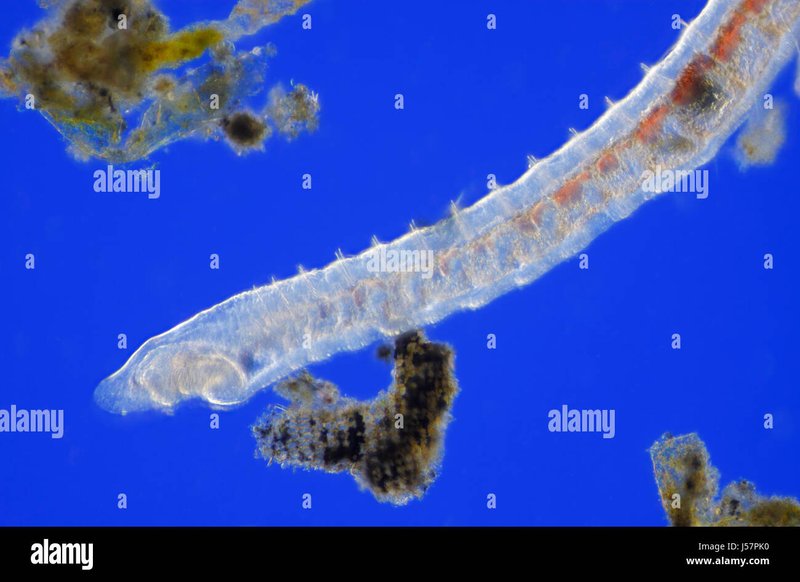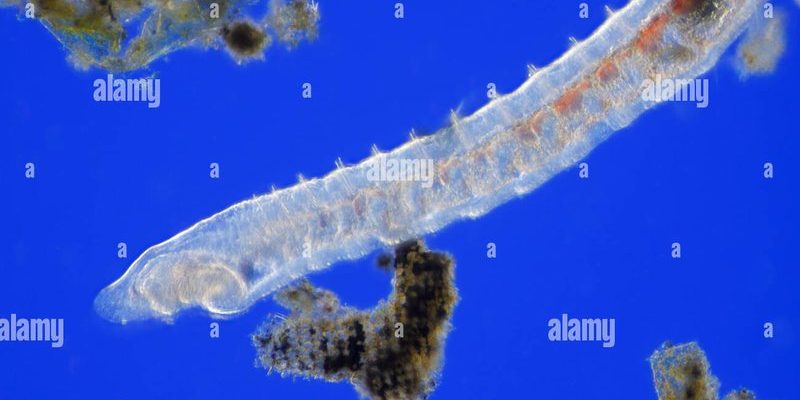
Imagine yourself on a cozy weekend outing by your local lake. You toss a stone into the water, and as ripples spread out, you wonder about the life swimming below. It’s not just fish that thrive in these waters. Oligochaetes, often hidden from view, are busy munching on decaying leaves or sediment, helping to recycle nutrients and maintain the ecosystem’s balance. As we dive into the fascinating world of these worms, we’ll explore how their activity changes with the seasons, and why understanding this can help us keep our freshwater bodies healthy.
What Are Freshwater Oligochaetes?
Freshwater oligochaetes are segmental worms that inhabit rivers, lakes, and ponds. They belong to a larger group of worms known as annelids. These little guys are essential for breaking down organic matter, which helps in maintaining water quality. They have a simple body structure, usually not longer than a few centimeters, and they come in various colors, often ranging from brown to greenish hues.
You might be surprised to learn that some oligochaetes are filter feeders while others are detritivores. Filter feeders consume tiny particles suspended in the water, while detritivores munch on decomposing plant and animal material. This dual role is really important. It means oligochaetes help keep the water clean and nutrient-rich, something that benefits other aquatic creatures.
Plus, they’re a food source for many fish and other animals. When you see a fish swimming, it might just be on the hunt for a tasty oligochaete! So, their role in the food web is vital, making them not just important for their environment but also for the health of numerous species.
Seasonal Changes in Oligochaete Behavior
Just like we adapt our habits with the changing seasons, oligochaete activity also fluctuates throughout the year. In spring, when temperatures start to rise, these worms become more active. They begin to surface, feeding on the abundant organic matter that arrives with melting snow and spring rains. It’s a time of renewal, both for nature and for these worms.
During the summer, when temperatures soar, oligochaetes might burrow deeper into the sediment to avoid the heat. This seasonal hiding act helps them conserve moisture and protect themselves from potential predators. You might wonder how they find food during this time—well, they have an incredible ability to sense organic material in the water column, so they’re still able to survive.
When fall arrives, they ramp up their activity again, feeding on decomposing leaves and materials that enter the water. This transition acts like a preparatory phase before winter, as they store energy to help them survive those cold months ahead. In winter, oligochaetes go into a sort of hibernation mode, slowing down their metabolism. It’s fascinating how nature creates these patterns, right?
Why Monitoring Oligochaete Activity Matters
You might be wondering why anyone would go to the trouble of monitoring these tiny creatures. The truth is, oligochaetes are excellent indicators of freshwater ecosystem health. By studying their populations, we can gain insights into water quality, organic matter levels, and even the impact of pollution.
For example, a decline in oligochaete populations might signal issues in the water’s health—kind of like a canary in a coal mine. If they’re not thriving, it could mean there’s too much pollution or not enough food for them. Conversely, a healthy and abundant oligochaete population usually indicates a thriving ecosystem, which is what we all want to see.
Plus, monitoring their activity can help inform conservation efforts. If we know how these worms respond to seasonal changes or human impact, we can take proactive steps to protect their habitats. It’s all about keeping the balance in our aquatic ecosystems.
Methods for Monitoring Oligochaete Populations
Now that we understand the importance of monitoring these worms, let’s talk about how it’s done. Researchers often use simple methods that can yield valuable data.
First, they might collect sediment samples from various locations within a freshwater body. This involves using a core sampler, which takes a small cylindrical section of sediment. Once they have the samples, they can then wash them in a sieve to separate the oligochaetes from the sediment. It’s a bit like panning for gold, but instead, you’re looking for tiny, wriggling worms.
After collecting the oligochaetes, researchers will identify and count them. This process not only helps in understanding the diversity of species present but also in tracking population changes over time. By conducting these surveys seasonally, they can monitor shifts in species composition and abundance.
In addition to physical sampling, researchers might also use environmental DNA (eDNA) techniques. This involves analyzing water samples for traces of oligochaete genetic material. It’s a non-invasive method that can provide a broader picture of their distribution without disturbing their habitats.
Challenges in Monitoring Freshwater Oligochaetes
Although monitoring oligochaete populations is crucial, it doesn’t come without challenges. One major obstacle is the variability of their habitats. Freshwater bodies can change dramatically due to factors like pollution, water flow alterations, and seasonal changes, making it difficult to establish a consistent monitoring protocol.
Another challenge is the identification process. With so many species, it can be tricky for researchers to differentiate between them, especially in a lab setting. Some oligochaetes look strikingly similar, and without careful examination, misidentification can happen. This highlights the need for ongoing training and development in taxonomic skills.
Lastly, funding and resources can also limit monitoring efforts. Many research teams work with tight budgets, which can impact their ability to conduct comprehensive studies. Advocating for the importance of these ecosystems can help secure more resources and support for future research.
The Future of Oligochaete Research
As our understanding of freshwater ecosystems grows, so does the potential for oligochaete research. New technologies are emerging, like remote sensing and artificial intelligence, which can help researchers analyze larger datasets more efficiently. With these advancements, we can gain deeper insights into how climate change and human activity are affecting these tiny organisms.
Moreover, collaboration between scientists, conservationists, and local communities can lead to more effective monitoring practices. When people recognize the importance of oligochaetes, they are more likely to support initiatives aimed at preserving their habitats. Community engagement can also foster a sense of stewardship for local waterways.
Finally, as we continue to learn more about these remarkable creatures, we might discover new applications for their benefits. For instance, can oligochaetes help in bioremediation efforts to clean up polluted water? The possibilities are exciting, and ongoing research will undoubtedly unveil more solutions for sustaining our freshwater ecosystems.
In conclusion, monitoring freshwater oligochaete activity across the seasons is more than just a scientific pursuit—it’s a vital part of understanding and protecting our planet’s health. By paying attention to these small but significant creatures, we can ensure that our freshwater habitats thrive for generations to come. So next time you’re near a pond or lake, take a moment to appreciate the hidden life beneath the surface. Who knows? Maybe an oligochaete is hard at work right beneath your feet!

